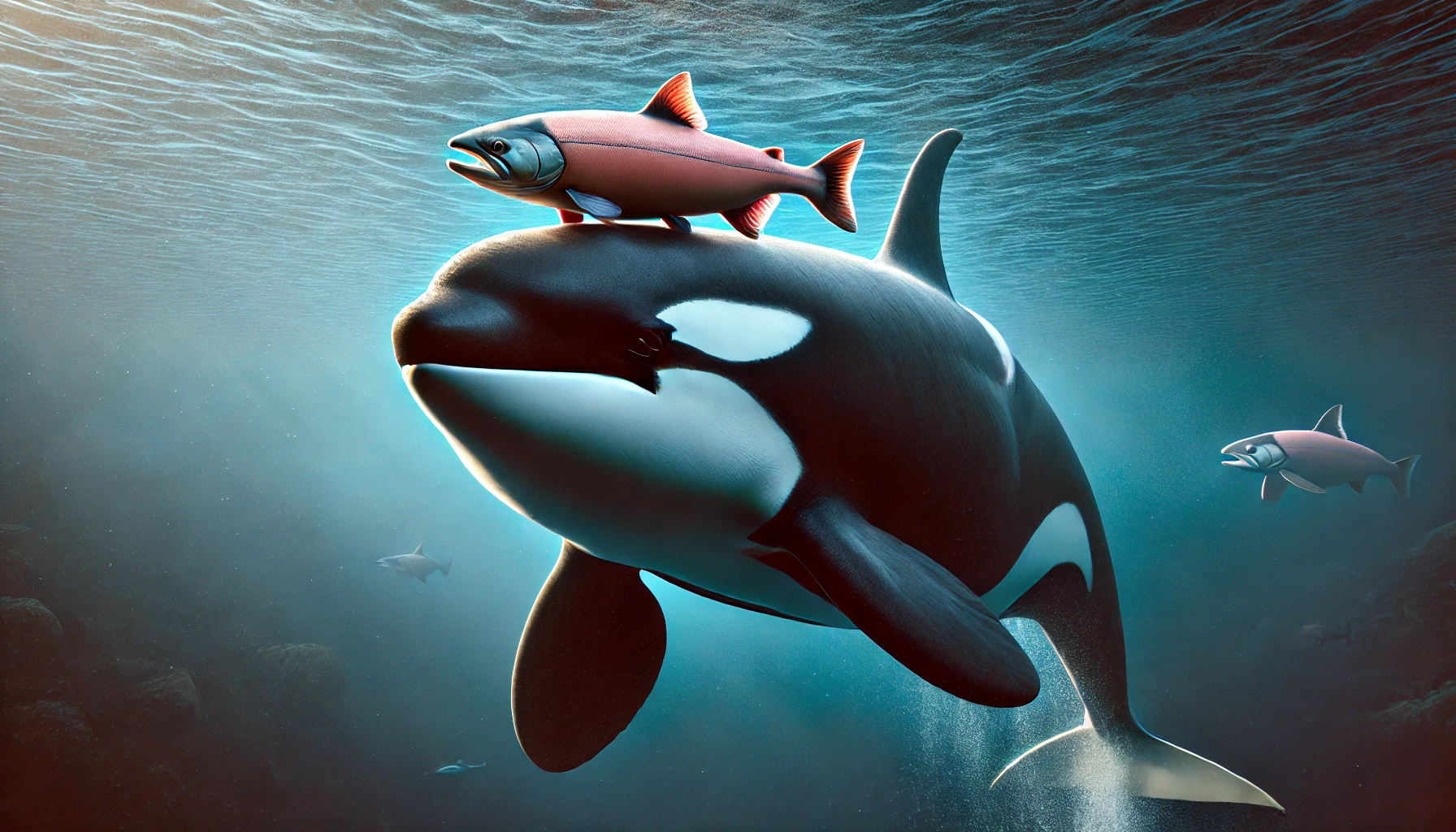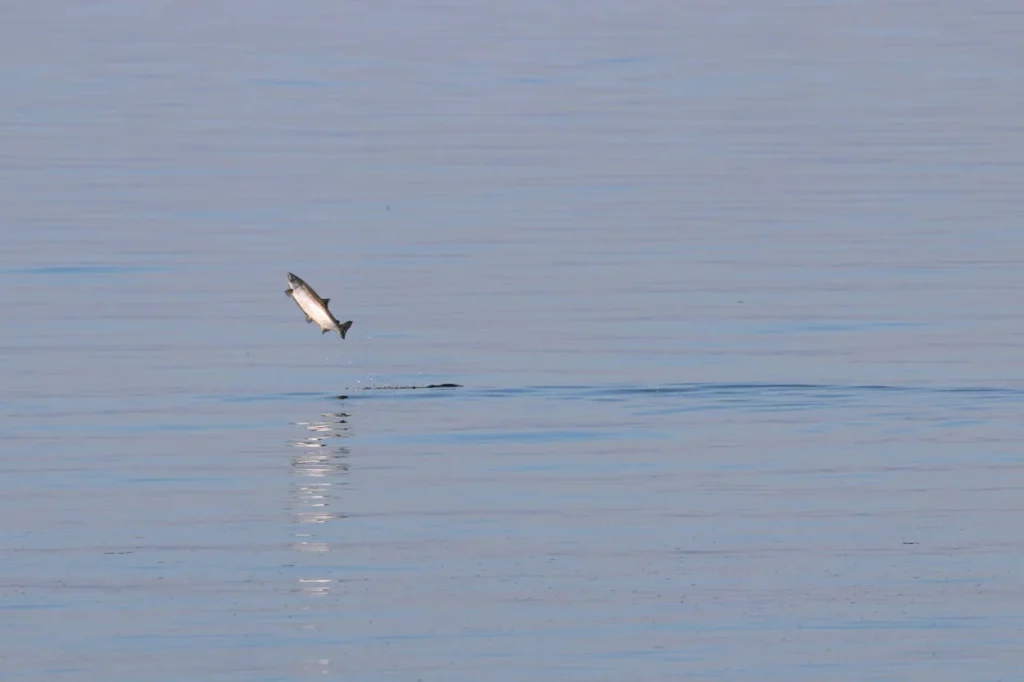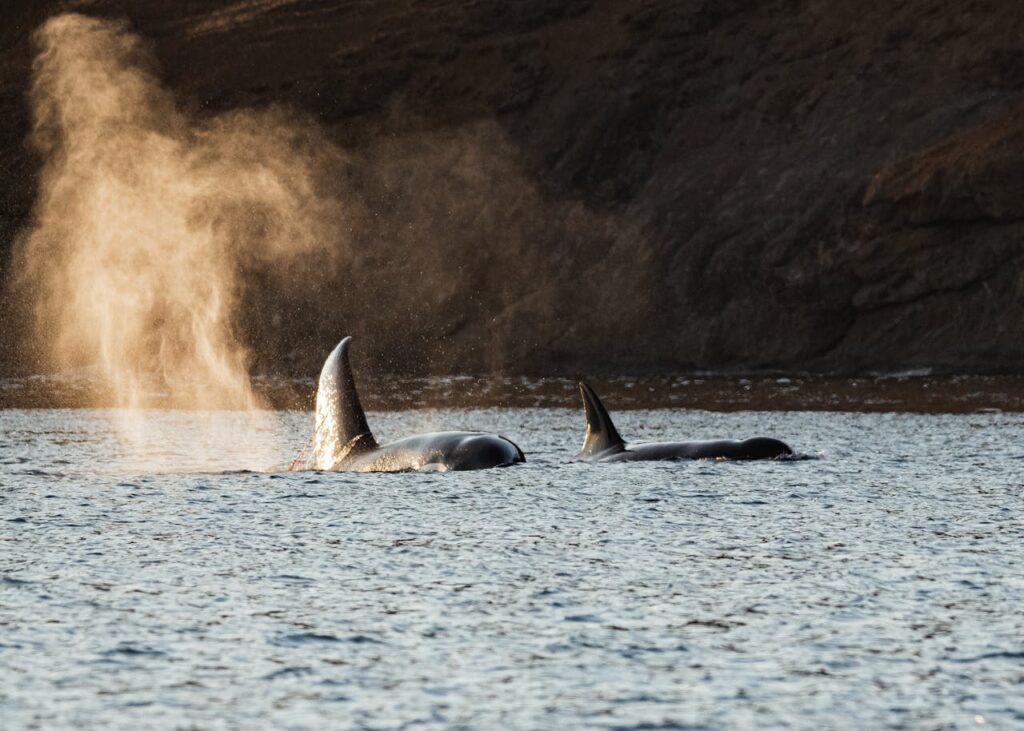Your cart is currently empty!
Orcas Start Wearing Dead Salmon Hats Again After Ditching The Trend For 37 Years

Imagine gliding through the vast Pacific Ocean, and catching sight of a majestic pod of orcas. These sleek and powerful marine mammals are a breathtaking sight to behold. But then, you notice something peculiar – some of the orcas are balancing dead salmon atop their heads, almost like bizarre headwear. It sounds like a scene from a surreal nature documentary, but this peculiar behavior has resurfaced after nearly four decades of dormancy.
Orcas, also known as killer whales, are renowned for their intelligence and complex social structures. Yet, the recent revival of this “salmon hat” trend has left scientists puzzled and intrigued. First documented in the 1980s and then seemingly abandoned, this behavior has suddenly reemerged among orcas off the Pacific Northwest coast. Is it a playful act, a social ritual, or something entirely beyond human comprehension? While the answers remain elusive, this curious phenomenon offers a rare glimpse into the cultural quirks of one of the ocean’s most enigmatic creatures.
The Peculiar Salmon Hat Phenomenon
Orcas are no strangers to displaying unique and puzzling behaviors, but the “salmon hat” phenomenon stands out as one of their most peculiar. This behavior involves orcas carefully balancing dead salmon on their heads while swimming, often for extended periods. Observers note that the fish appear to be deliberately placed and held in position, suggesting a level of intent rather than mere chance or clumsiness.
Unlike their typical hunting and feeding activities, this behavior lacks any obvious functional purpose, sparking curiosity among marine biologists. Andrew Foote, an expert on orca behavior, commented, “It does seem possible that some individuals that experienced [the behavior] the first time around may have started it again.” This raises intriguing questions: Is it a form of play, an attempt at social bonding, or perhaps a cultural display unique to certain pods?
The revival of this behavior has been documented primarily among orcas in the Pacific Northwest region. While it hasn’t been observed universally across all orca populations, its sudden reappearance hints at a deeper social or cultural element unique to these marine giants. By examining the nuances of this odd trend, scientists hope to decode what it might signify about orca intelligence and social dynamics.
The 37-Year Gap: A Mysterious Disappearance and Resurgence
The salmon hat phenomenon first caught the attention of researchers in the 1980s when orcas off the Pacific Northwest coast were observed balancing dead fish on their heads. At the time, this unusual behavior was noted but not extensively studied. Over the following years, it mysteriously disappeared, leaving marine biologists puzzled about its sudden emergence and equally abrupt disappearance.
Now, nearly four decades later, this peculiar trend has made a surprising comeback. Deborah Giles, a marine biologist, expressed the rarity of witnessing such behavior, saying, “It’s been a while since I’ve personally seen it.” This raises questions about whether this behavior was quietly maintained by some individuals or pods, or if it has been rediscovered and adopted anew by the current generation of orcas.
Theories abound about why the trend vanished for so long. Some scientists speculate that environmental changes or shifts in prey availability might have influenced its disappearance. Others suggest it could have been a lost social tradition, rekindled by younger orcas observing and mimicking the actions of their elders. Understanding the factors behind this 37-year gap might offer critical insights into the cultural complexities of these oceanic giants.

Possible Explanations: Play, Social Bonding, or Cultural Display?
The motives behind the salmon hat trend remain a tantalizing mystery, sparking a range of theories among researchers. Orcas are known for their playful and social nature, often engaging in behaviors that seem to have no direct survival benefit. This particular trend—balancing a dead fish on their heads—could be an elaborate form of play, a means of social bonding, or even a display of status within the pod.
“Honestly, your guess is as good as mine,” said Giles. One theory posits that the act could be a playful way for orcas to strengthen social ties, much like how dolphins engage in games with seaweed or bubbles. Alternatively, it might serve as a display of dexterity, showcasing individual skill within the pod’s hierarchy.
Some researchers suggest that the behavior might have symbolic or ritualistic undertones, potentially reflecting learned traditions passed down through generations. The fact that the trend has reemerged after decades of dormancy points to orcas’ remarkable ability to retain and transmit cultural knowledge. As scientists continue to observe and analyze this behavior, they hope to unlock more clues about the sophisticated social lives of these marine mammals.
Cultural Transmission and the Complexity of Orca Societies
The reemergence of the salmon hat phenomenon sheds light on the extraordinary cultural dynamics of orca pods. Like humans, orcas are known to learn behaviors through social interactions, a process referred to as cultural transmission. This behavior exemplifies the ways in which knowledge, traditions, and even quirks are passed down among these intelligent marine mammals.
Orcas have previously demonstrated a variety of learned behaviors, such as specific hunting techniques tailored to their environments or the use of vocal dialects unique to different pods. The ability to revive a behavior after decades further underscores the complexity of orca culture. Whether younger generations rediscovered this trend through experimentation or inherited it from long-standing traditions, the salmon hat behavior is a testament to their advanced social structures and memory.

The Future of Orca Research and Conservation Efforts
The return of the salmon hat trend provides a unique window into orca behavior, offering valuable insights into their intelligence, social dynamics, and cultural transmission. This phenomenon challenges researchers to expand their understanding of these marine mammals beyond traditional studies of hunting, communication, and migration.
One of the most intriguing aspects of this behavior is its potential link to orcas’ capacity for memory and cultural preservation. The 37-year gap between documented instances suggests that orcas may retain behaviors in their “cultural repertoire,” reactivating them under the right conditions. This has profound implications for our understanding of their cognitive abilities and social complexity.
Moreover, such behaviors remind us of the broader importance of marine conservation efforts. By understanding the cultural lives of orcas, researchers can better advocate for protections that ensure their environments remain conducive to these rich social behaviors. Whether it’s through play, tradition, or experimentation, the salmon hat phenomenon underscores the profound intelligence and adaptability of these creatures, offering a compelling reason to prioritize their preservation.
As we continue to unravel the mysteries of the salmon hat trend, we are reminded of the vast depths of knowledge yet to be explored in the ocean’s depths. These enigmatic creatures have captivated our imaginations for centuries, and their revival of this peculiar behavior only adds to their allure. By studying and protecting orcas, we not only safeguard a remarkable species but also gain invaluable insights into the intricate tapestry of life beneath the waves.
